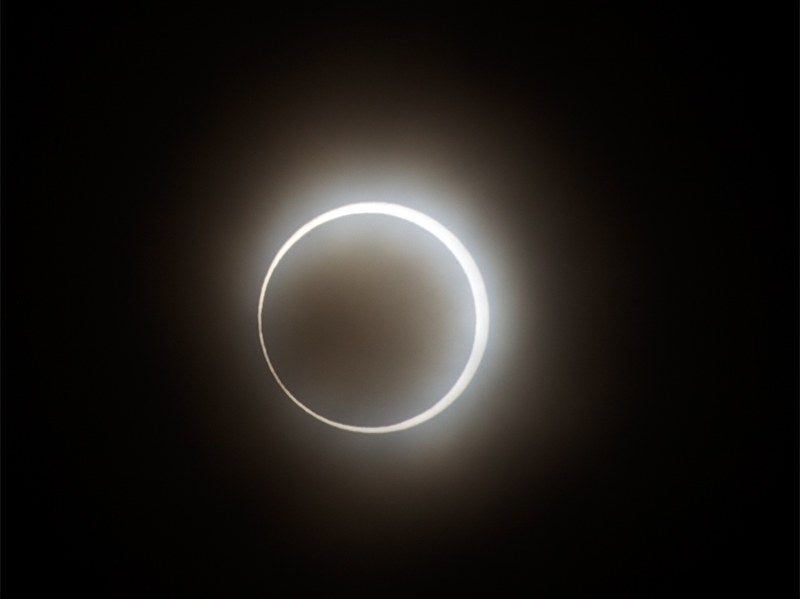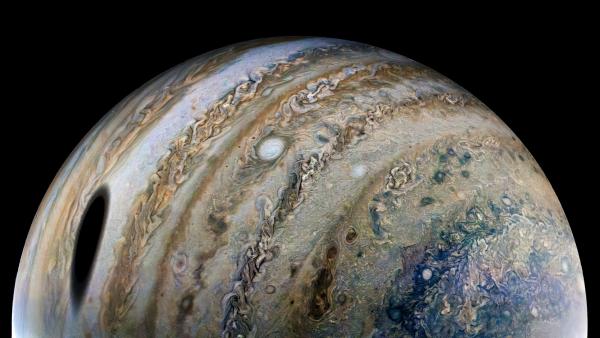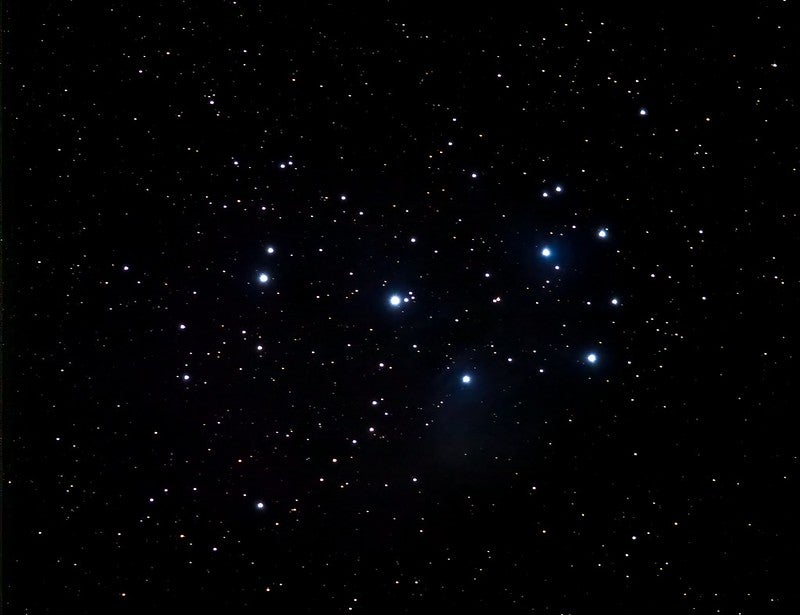
Friday, September 27
Are you looking for a real observing challenge? Comet C/2023 A3 (Tsuchinshan-ATLAS) is shaping up to be the best comet of the year, but it’s still low in the early-morning sky for Northern Hemisphere observers, making it tough to see despite recently hitting mid-3rd magnitude.
Today the comet reaches perihelion, the closest point to the Sun in its orbit around our star. It is now 36.4 million miles (58.6 million kilometers) from the Sun, and some 85.5 million miles (138 million km) from Earth. But it’s getting closer to us — Tsuchinshan-ATLAS will make its closest pass of Earth in mid-October, coming within some 43.9 million miles (70.7 million km) of our planet.
Its visibility will vastly improve by then; but for now, step outside just before sunrise and scan the eastern horizon with binoculars or a telescope. The comet stands barely 4° high in the east at 6 A.M. local daylight time, in far eastern Sextans and below the front haunches of Leo the Lion as it rises in the east. Its tail is roughly 1° long and shows up well in long-exposure photographs, but will be hard to pick out visually against the brightening sky.
Meanwhile, the waning crescent Moon stands high in the east this morning in the constellation Cancer. A bit earlier in the morning, say around 5 A.M. local daylight time, you can spot the open cluster M44, also called the Beehive Cluster, to the lower right of our satellite. Binoculars or any small scope will easily show the cluster of young stars in the central region of the Crab.
Sunrise: 6:53 A.M.
Sunset: 6:48 P.M.
Moonrise: 1:38 A.M.
Moonset: 4:50 P.M.
Moon Phase: Waning crescent (22%)
*Times for sunrise, sunset, moonrise, and moonset are given in local time from 40° N 90° W. The Moon’s illumination is given at 12 P.M. local time from the same location.

Saturday, September 28
When Jupiter’s largest moon, Ganymede, throws its shadow on the gas giant’s cloud tops, the huge black blot is easy to see in a telescope. Just such a shadow transit occurs early this morning, starting around 2:45 A.M. EDT. (Note this is shortly after midnight in the Mountain time zone and still late on the 27th in the Pacific time zone.)
Jupiter itself rises around 10:30 P.M. local daylight time, so there’s plenty of time for it to get higher in the east prior to the event, particularly the farther east in the U.S. you live. You’ll find the planet, which shines at magnitude –2.4, in the constellation Taurus the Bull, about 12.5° to the lower left of its brightest star, Aldebaran, and near the points of the Bull’s two horns.
Once you’re settled on Jupiter and zoomed in with a telescope, you’ll note that as the shadow transit starts, Ganymede’s shadow takes several minutes to appear at Jupiter’s southeastern limb. It then slowly crosses the planet’s southern polar region from east to west, exiting around 4:40 A.M. EDT. Look at the shape of the shadow, particularly its elongation — this shows the curvature of the gas giant planet onto which the shadow is projected.
Ganymede itself is just east of Jupiter, as are Callisto and Europa. The latter two moons trade places over the course of the morning: Before about 2:30 A.M. EDT, Europa is closer to Jupiter than Callisto. After passing north of Callisto at this time, Europa pulls away from Jupiter to the east, while Callisto is closer to the planet (with Ganymede closer still) on that side. Io, meanwhile, stands alone on Jupiter’s western side.
Sunrise: 6:54 A.M.
Sunset: 6:46 P.M.
Moonrise: 2:43 A.M.
Moonset: 5:17 P.M.
Moon Phase: Waning crescent (14%)
Sunday, September 29
Asteroid 20 Massalia reaches opposition at noon EDT. Located in the constellation Pisces, the asteroid stands highest in the south around local midnight. At magnitude 9.2, it is reachable with good binoculars or a telescope, though the darker your sky, the better your chances of viewing it.
Massalia is near the border of Pisces and Cetus, about 1.2° north of a 6th-magnitude field star. Although it’s farther away, you can use the well-known 5th-magnitude red giant star 19 Piscium, also called TX Psc, to help find Massalia tonight. Once you’ve centered on 19 Psc, simply slide east some 10° to land on the main-belt world.
If you want to find a much more distant solar system world, Neptune is also in Pisces. It lies just over 9° southwest of Massalia, and nearly 6° south-southeast of 19 Psc. At magnitude 7.7, Neptune is brighter than Massalia but still requires at least binoculars to see, as it’s too faint to view with the naked eye. Its disk spans just 2”, and may look like a “flat,” grayish star in your optics.
Sunrise: 6:55 A.M.
Sunset: 6:44 P.M.
Moonrise: 3:47 A.M.
Moonset: 5:39 P.M.
Moon Phase: Waning crescent (8%)
Monday, September 30
Mercury reaches superior conjunction at 5 P.M. EDT. Now behind the Sun from our point of view, the tiny planet is invisible. It will reappear in the evening sky next month.
So, let’s close out September with a focus on the other inferior planet: Venus. Visible as a blazing evening star after sunset, Venus shines at magnitude –3.9 and is about 12° high in the southwest at sunset. Thirty minutes later, it is still 7° high in the darkening sky and conditions are perfect to view its gibbous disk through a telescope. Because Venus is so bright, catching it before the sky gets too dark (or it sinks too low) helps to reduce contrast and allow your eye to see detail, such as the illumination of the disk — now at 85 percent. That disk appears 12” in width to us now; as the phase drops in the coming days, the disk size will grow, reaching 14” before the end of October.
Venus is currently in Libra, with the bright star Antares, which anchors the heart of Scorpius, far to its upper left. It will continue moving through Libra and toward this star as the days pass, setting up a stunning conjunction with the crescent Moon in Scorpius near Antares on October 7.
Related: The Moon meets Venus: This Week in Astronomy with Dave Eicher
Sunrise: 6:56 A.M.
Sunset: 6:43 P.M.
Moonrise: 4:48 A.M.
Moonset: 5:59 P.M.
Moon Phase: Waning crescent (4%)

Tuesday, October 1
The lovely Pleiades star cluster (M45) provides an easy signpost to locate the distant ice giant Uranus all month. The best time to view them is overnight — the two reach some 30° above the eastern horizon by local midnight, rising a few hours earlier and continuing to gain altitude into the early-morning hours.
The Pleiades is an easy-to-spot pattern of stars in northwestern Taurus, to the upper right of the Bull’s bright red eye, Aldebaran. Many people think the cluster looks like a tiny dipper or spoon, but note that it is not the Little Dipper asterism, which stands in the north and whose handle ends with the North Star, Polaris.
The best way to enjoy viewing the Pleiades is under low power, such as binoculars, a small telescope, or even a finder scope. Because the cluster spans some 110’ on the sky, zooming in with too much magnification will cause many of its members to drop out of your field of view. These bright, blue stars are quite young, only some 100 million years in age.
To find Uranus, some 5.6° south-southwest of the Pleiades, you will want binoculars or a telescope. With your optics, first drop roughly 4.5° south of the cluster and look for a pair of 6th-magnitude stars standing side by side. These are 13 and 14 Tauri (13 stands west of 14). From 13 Tau (again, the westernmost star), Uranus is 1.3° to the southwest. Glowing at magnitude 5.7, it now appears at the same brightness as 13 Tau. The planet’s disk is nearly 4” in diameter, thanks to its vast distance from Earth.
Keep returning to this region all month to watch the gap between Uranus and 13 Tau slowly increase by a full degree, as the planet moves in the sky relative to the stationary background star.
Sunrise: 6:57 A.M.
Sunset: 6:41 P.M.
Moonrise: 5:48 A.M.
Moonset: 6:18 P.M.
Moon Phase: Waning crescent (1%)
Wednesday, October 2
New Moon occurs at 2:49 P.M. EDT. Less than an hour later, at 3:30 P.M. EDT, the Moon reaches apogee, the farthest point from Earth in its orbit. It then stands 252,297 miles (406,033 kilometers) away.
These two factors combine with the current geometry of the Sun-Earth-Moon system to bring an annular solar eclipse to South America. Annularity is visible from southern Chile and Argentina, while a partial eclipse can be seen from regions of the Pacific Ocean (including Hawaii) and southern South America. Annularity occurs when the Moon is far enough from Earth that it appears just a little too small to fully cover the Sun’s brilliant disk, as it does during a total solar eclipse. This means there is no time during an annular eclipse — even in the path of annularity — when it is safe to take off protective solar glasses, even at maximum eclipse.
On the flipside, this eclipse is quite a long one, with a duration at greatest eclipse of 7 minutes and 25 seconds. Traveling from west to east, the eclipse begins early in the morning at sunrise in the Pacific Ocean, then travels south and west toward South America, where it passes over regions of Chile and Argentina before sliding away into the Atlantic ocean at sunset. For more details on where and when the eclipse will occur, including an interactive map with specific timings for each location, check out timeanddate.com’s page for the eclipse.
Related: How to see the next 20 years of eclipses, including the eclipse of a lifetime
Sunrise: 6:58 A.M.
Sunset: 6:40 P.M.
Moonrise: 6:47 A.M.
Moonset: 6:37 P.M.
Moon Phase: New
Thursday, October 3
Saturn’s largest moon, Titan, is located near the planet overnight this evening and into tomorrow morning.
You can start looking for Saturn as soon as the sky grows dark after sunset, when it stands 20.5° high in the southeast. Overnight, Saturn makes a southerly arc through the sky, standing highest in the hour before local midnight, when it is due south. The planet glows at magnitude 0.6 in Aquarius, outshining the nearby stars of the Water-bearer.
Through a telescope, Saturn’s disk stretches an impressive 19”, while its rings are nearly 43” across at their widest. They are tilted just 4.5° to our line of sight, with only a thin portion of their northern side visible and nearly the full disk of Saturn available to view.
Titan is both the planet’s largest and brightest moon. Shining around 8th magnitude, you’ll find it less than 1’ from the planet tonight, located southwest of Saturn overnight. Earlier in the evening the moon lies closer to the ringed world; as the hours tick by into the early morning of the 4th, you’ll note it pulling farther away to the east.
At least three smaller, fainter (10th-magnitude) moons are also visible overnight, with one undergoing an occultation as it passes behind the planet from our point of view. Earlier in the evening, you may spot Rhea some 1.4’ due east of Saturn, while Dione is just under 1’ to Saturn’s west. Much closer to the planet, just north of the rings and moving rapidly from west to east, is Tethys, which disappears behind the planet’s western limb shortly before 12:50 A.M. EDT (on the 4th for those in the Eastern time zone, but still the 3rd for those farther west). The moon takes roughly three hours to cross behind the planet and through its dark shadow, which stretches to the northeast; the tiny moon reappears just north of the rings on the eastern side of Saturn minutes before 4 A.M. EDT on the 4th.
Sunrise: 6:59 A.M.
Sunset: 6:38 P.M.
Moonrise: 7:46 A.M.
Moonset: 6:57 P.M.
Moon Phase: Waxing crescent (1%)
Friday, October 4
Magnitude 0.4 Mars, now in Gemini, is only a few months from opposition, which occurs in January next year. Although the planet rises in the evening, it is highest in the early-morning hours and reaches 45° in altitude in the east by 4 A.M. local daylight time. You can find it to the right of the bright stars Castor and Pollux, which mark the heads of the Twins. This morning, the Red Planet appears to stand in a horizontal line with Betelgeuse to its right and Pollux to its left. Additionally, look to Mars’ upper right to spot bright Jupiter in eastern Taurus, forming a diagonal line with Mars at one end and the magnitude 0.9 red giant star, Aldebaran, at the other.
Through a telescope, Mars is now 8” wide; it will grow to 9” by month’s end. With a telescope and under good seeing conditions, some features are now becoming visible on the disk, particularly when using high-speed video capture astrophotography techniques. This morning around 4 A.M. in the Midwest, the dark features of Syrtis Major and Sinus Meridiani should be visible, as well as possibly the brighter Hellas Basin to the south of Syrtis Major.
Sunrise: 7:00 A.M.
Sunset: 6:36 P.M.
Moonrise: 8:47 A.M.
Moonset: 7:19 P.M.
Moon Phase: Waxing crescent (3%)

Sky This Week is brought to you in part by Celestron.









